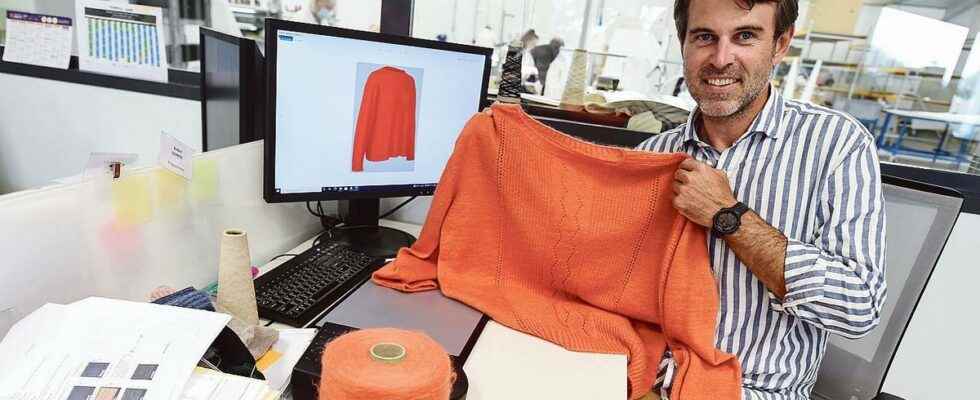FIGARO DEMAIN – The main interest of this innovation: to divide industrial waste by ten.
The fashion industry is one of the most polluting. It represented 1.2 billion tonnes of CO2 in 2019, according to the World Bank, or 10% of total greenhouse gas emissions – more than international flights and maritime transport combined – and is expected to increase by another 50% by 2030, if we look at it. believes the United Nations Environment Program (UNEP).
For several years, manufacturers have been using a technology that could change the game: 3D knitting, an innovation from the Japanese company Shima Seiki that appeared in 1995. After Uniqlo, the French company 3D-Tex, co-founded by Gwendal Michel , Basile Ricquier and Marc Sabardeil in Saint-Malo, relies on Shima Seiki machines for the design of sweaters. The three founders cut their teeth in the textile industry in Asia. “We saw the best but also the worst, from a social and environmental point of view”, says Gwendal Michel.
Read alsoClothing, shoes: the French industry challenged to better organize itself to recycle effectively
In 2020, they created their company to relocate clothing production to France. The choice of 3D knitting is dictated by the disappearance of skilled labor in France. This technology, fully digitized, allows the product to be modeled upstream in a virtual way. Shape, knitting stitch, thread, material, the possibilities are “almost infinite”. They are the only ones to use it entirely in France. “Some have two 3D machines lost in a fleet of traditional machines”, says Gwendal Michel.
The main interest of this innovation: to divide industrial waste by ten. The sweater is designed in one piece, without seams. “A gigantic raw material reduction potential”, says the industrialist. “We only produce 1% or 2% of waste against 20% to 30% on average“, he enthuses. At the product design level, everything is done virtually, which allows “less round trips by post for the development of the model”.
Textile for automotive and paramedical
In one year, 70,000 pieces of sweaters left the factory, which employs 35 people. “We work with around twenty clients of all types, 75% of whom are retail.” Brands as varied as Bonobo, Eram, Auchan, Sézane or Le Slip français. It’s only a beginning. The company aims to become three to four times larger in the next five years. It is positioned in a booming fashion market: “from 2000 to 2014, clothing consumption increased by 60% worldwide”, is alarmed Bérengère Weiss, in her book When the planet will have nothing left to wear (1). And the period of use of clothes decreases: they are kept half as long as before.
3D-Tex is not limited to clothing. The company is currently working on R&D in the design of automotive and paramedical textile parts.
(1) Delachaux and Niestlé, 2022.
Society, health, environment, education, energy
» Discover the actors and initiatives of change
